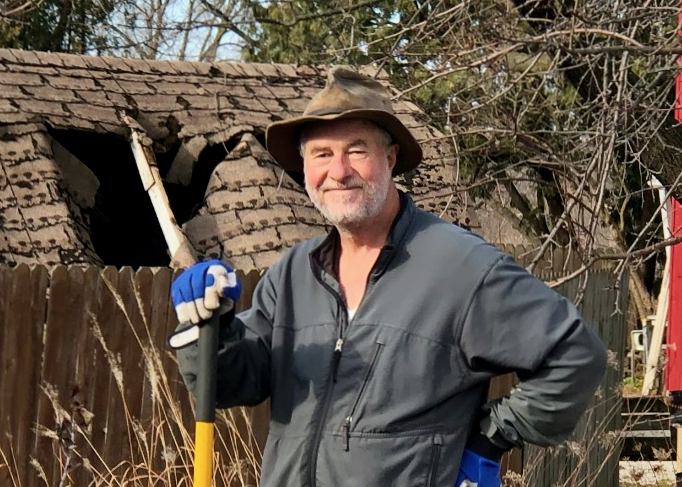By Dan Russler
After writing commentary in June, titled: “The Wisconsin Energy Plan in Jefferson County,” a commenter, Jim Schroeder, who is a member of the Jefferson City Council, asked me to develop “actionable first steps” towards developing an energy plan.
My earlier commentary on the subject, and the alderman’s request, is here: https://fortatkinsononline.com/between-the-rails-the-wisconsin-energy-plan-in-jefferson-county/.
Since the goal would be to recapture out-of-state energy purchases for our Jefferson County economy, in my conversation with Jim, I suggested the proposal begin, as in any technical project, with education utilizing state resources.
In his response, Jim replied that those making decisions regarding the allocation of state educational resources seemed to respond well to requests from the county governments. The catch, he said, is that many people within the county need to support such a plan in order for the county governments to make a resource request from the state.
From my own experience, I expect that people in Jefferson County will need a concrete initial proposal before they are willing to sign-on. In addition, the state can’t respond very well to education requested in an ambiguous manner. So here’s my proposal.
Jefferson County community solar proposal: version 1
I propose that Jefferson County should develop an innovative project for which it will request funds from state and federal governments. In order to succeed, Jefferson County will need to request educational resources from Wisconsin Extension, UW, and the state’s governmental agencies. Embedded in the request for state resources will be this proposed project:
I propose that a city electric utility, such as in Jefferson or Lake Mills, should contract with a newly-formed Community Solar organization to provide solar energy. Other counties in Wisconsin have Community Solar organizations, but Jefferson County has left this alternative largely unexplored.
The Community Solar organization could then obtain electricity from large and small businesses within the city and from small businesses and agrivoltaic armers in the surrounding towns. Specialized solar inspectors hired by the city and surrounding towns could then enforce the building codes necessary to make sure a high-level of quality is maintained.
I propose that funded research projects supervised by UW agriculture could focus on solar uses, benefits and costs for farmers, such as those related to soil regeneration. UW business students and their faculty could then be recruited for return-on-investment studies for the business sector, and local fabrication students in apprenticeships could benefit from real-world requests for solar panel structures and the occasional custom work required for research projects.
For such a project to come to fruition, I believe a broad spectrum of county resources will need to work together. According to the Solar Energy Industries Association, the subscribers to Community Solar are residents, small businesses, organizations, municipalities and others who receive credit on their electricity bills for the power produced from their portion of a solar array, offsetting their electricity costs. The assurances include a fair, bill-credit mechanism that provides subscribers with an economic benefit commensurate with the value of the longterm, clean, locally-sited energy produced by community renewable energy projects.
Costs for this community project will be much reduced if counties, cities and towns can create streamlined permitting and inspection costs for solar installed within this framework. Multiple installers should be free to participate, although these installers could be limited to Jefferson County small businesses in order to maximize benefits to the Jefferson County economy.
In the future, non-solar, local sources of electricity could be developed and contribute to this community energy program. These include: dairy farms and landfills, which produce methane-powered electricity, as well as wind power facilities and other innovative energy production methods.
Outcomes
As always, public investments should be closely monitored for return-on-investment. In this case, the metric for success will be: How much money has Jefferson County prevented from leaving our county for the purposes of out-of-state energy purchases?
Perhaps a better way to ask the question is: How much profit have all Jefferson County stakeholders retained as Jefferson County reduces out-of-state purchases of energy?
In the end, measurements of success or failure should be reported by the accountants who measure the return-on-investment results.
I am requesting comments below in response to the suggestions I’ve made in this commentary.
Perhaps, dear reader, you would consider sharing your thoughts while answering this question: What changes, if any, would you propose before signing onto a proposal such as this?
Describing himself as a writer of “commentary by a nonpartisan centrist,” Dan Russler is member of two ad hoc analytical groups: Fair Maps of Jefferson County and the Wisconsin Map Assessment Project (WIMAP), and he is one of 36 “Concerned Voters of Wisconsin,” a citizens’ group which submitted in January an amicus brief, also known as a “friends of the court” document, asking the Wisconsin Supreme Court to reject the Wisconsin Legislature’s proposed Assembly map. He is one of 10 Wisconsin voters who, in March, filed a civil rights lawsuit asking the federal court for a declaratory judgement disqualifying U.S. Sen. Ron Johnson, and U.S. Reps. Scott Fitzgerald and Tom Tiffany as candidates for office in November. Russler is a resident of Jefferson County.

Dan Russler
This post has already been read 1135 times!